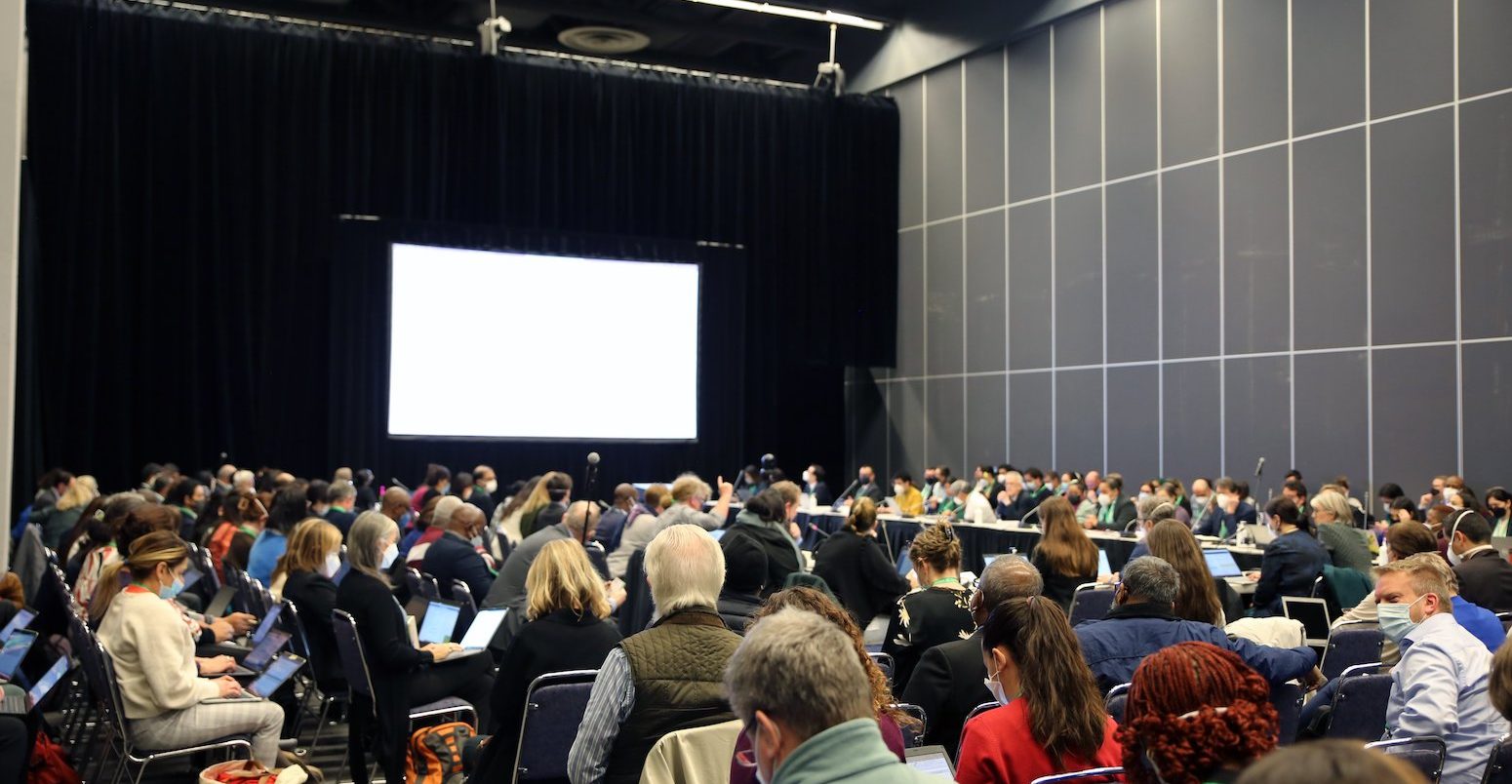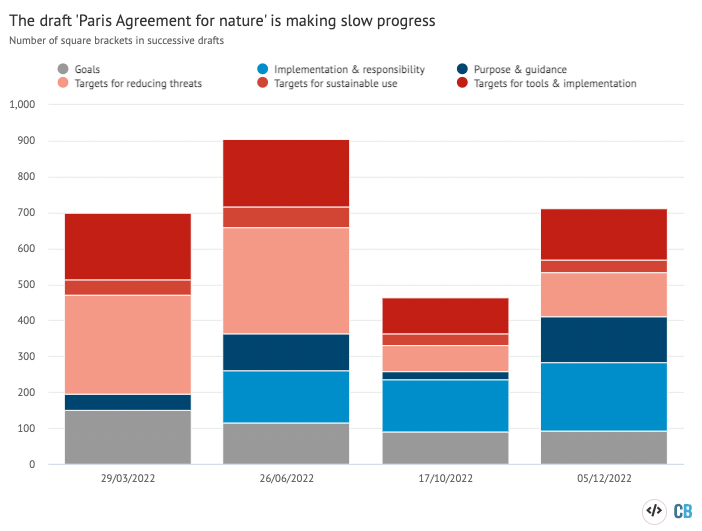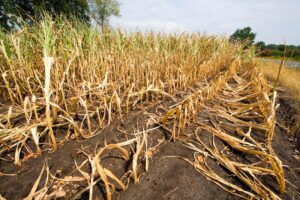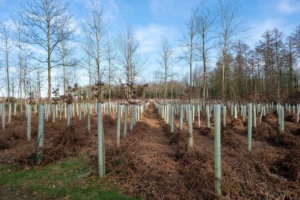
Interactive: Tracking progress at the COP15 biodiversity summit
Giuliana Viglione
12.06.22Giuliana Viglione
06.12.2022 | 5:15pmLess than a month after the UN’s COP27 climate talks in Sharm el-Sheikh comes a different conference of the parties: that of the parties to the UN Convention on Biological Diversity (CBD).
At COP15 in Montreal over the next two weeks, delegates are tasked with negotiating the post-2020 global biodiversity framework (GBF) – a set of goals and guidelines with the overarching aim of halting and reversing the loss of biodiversity by 2030.
After several years of delays due to the Covid-19 pandemic and multiple drafts of the GBF, it is now up to negotiators to finalise the framework.
(For more on COP15, see Carbon Brief’s interactive on who wants what at the summit.)
In the table below, Carbon Brief has analysed each iteration of the GBF to understand where progress is – and is not – being made in the text. This will be updated throughout the summit as new draft texts are published.
The first column shows the texts that are being analysed. This includes the GBF itself and the cover decision, which will declare the COP’s support for and adoption of the GBF. The second column lists various iterations of the text: the first draft, the Geneva “elements” text, the Nairobi draft and the streamlined text.
Column three breaks the GBF down into its sections, goals and targets, using the labels in the text itself. The fourth column provides a brief description of each goal and target, as well as the names of the various sections. The next column provides a date (and, if applicable, time stamp) to distinguish between the drafts.
The sixth and seventh columns provide, respectively, the word count and the bracket count of each section, goal or target. The word count was calculated inclusive of titles and headers, but excluding notes and footnotes. The brackets were counted as the sum of the open brackets in a given portion of the text.
(The Nairobi and Montreal texts each contain five brackets in a footnote; these are counted in the sums listed in this article but do not appear in the table.)
The eighth column, brackets per 100 words, is calculated from the previous two. The ninth column gives a count of the “alternatives” and “options” listed in the text. The tenth column provides a link to each relevant document, while the last column contains any relevant notes.
Disagreeing delegates
The body tasked with creating the GBF is the “open-ended working group”, an inclusive forum established at COP14 for parties to update the CBD’s strategic plan and shape the GBF.
Chaired by Uganda’s Francis Ogwal and Canada’s Basile van Havre, the group has met five times in person, beginning with a first meeting in Nairobi in August 2019 and stretching all the way to Montreal, where the group concluded its work just before the start of COP15.
Coming into Montreal, the draft GBF was heavily bracketed. In UN documents, brackets denote parts of the text on which parties cannot agree; the text cannot be adopted until the document is “cleaned”, that is, all of the brackets are removed.
The process began with a zero draft and an “updated” zero draft, prepared by the working group co-chairs and the CBD executive secretary, which outlined the necessary elements of the framework. The official first draft of the GBF came out of the working group’s third meeting. This draft – also prepared by the co-chairs and executive secretary – was more than 2,800 words long and, given that negotiations had not yet begun, was not bracketed.
The working group held a second part of their third meeting in Geneva in March 2022. That meeting, where only certain elements of the text (including the goals and targets) were considered, resulted in a document more than 6,000 words long and containing 699 brackets.
At the fourth working group meeting in Nairobi in June 2022 – which resulted in a complete draft – delegates agreed to a text clocking in at 9,350 words and containing 911 sets of brackets.
The rising numbers of words and brackets reflect a standard part of the negotiating process, where parties’ positions on each element of the text are added to the draft.
The number of brackets in each part of successive drafts of the GBF is shown in the chart below. The totals for each draft are broken down into broad categories.

In an attempt to smooth the negotiations at the fifth and final working group meeting in Montreal, parties in Nairobi also agreed to create an “informal group” whose job would be to look at the draft and see where the unwieldy text might be streamlined.
This informal group was a “small and regionally balanced group of negotiators”, as laid out in the official report (pdf) from the Nairobi meeting. Comments made by several countries at the working group’s plenary session on 3 December made clear that they disapproved of the lack of inclusion.
The resulting “streamlined” text is about 30% shorter than the Nairobi draft, at about 6,550 words, and contains just over half as many brackets, at 463. A sticking point for many countries, however, was that the streamlined text could not be used as the basis for negotiations as it had not been approved by the working group as a whole.
Ultimately, the parties agreed to present both the Nairobi draft and the streamlined text side-by-side to serve as the basis of the negotiations of the working group.
Intense negotiations
Going into Montreal, the parties had their work cut out.
Only two targets – one on urban green and blue spaces and one on capacity-building and technology transfer – had been cleaned of their brackets in Nairobi.
During the plenary session to launch the fifth open-ended working group meeting, Ogwal told delegates that he and van Havre were “committed” to arriving at a text with no square brackets by the end of the session on 5 December.
But although three further targets were cleaned of brackets during the first day of the working group’s meeting, consensus was not reached on any other targets throughout the course of the second day. At a morning press briefing on 5 December, David Ainsworth, an information officer for the CBD secretariat, told reporters:
“Ideally, we would have wanted the working group to take texts that were finally agreed, with no brackets in them, and send those onto COP for further deliberation.
“It is obvious that the vast majority of text for this framework will still need to be intensely negotiated [during COP15].”
The latest draft of the GBF, which will be passed to the negotiators at COP15, is more than 9,000 words long and contains 719 brackets. This draft has five clean targets.




